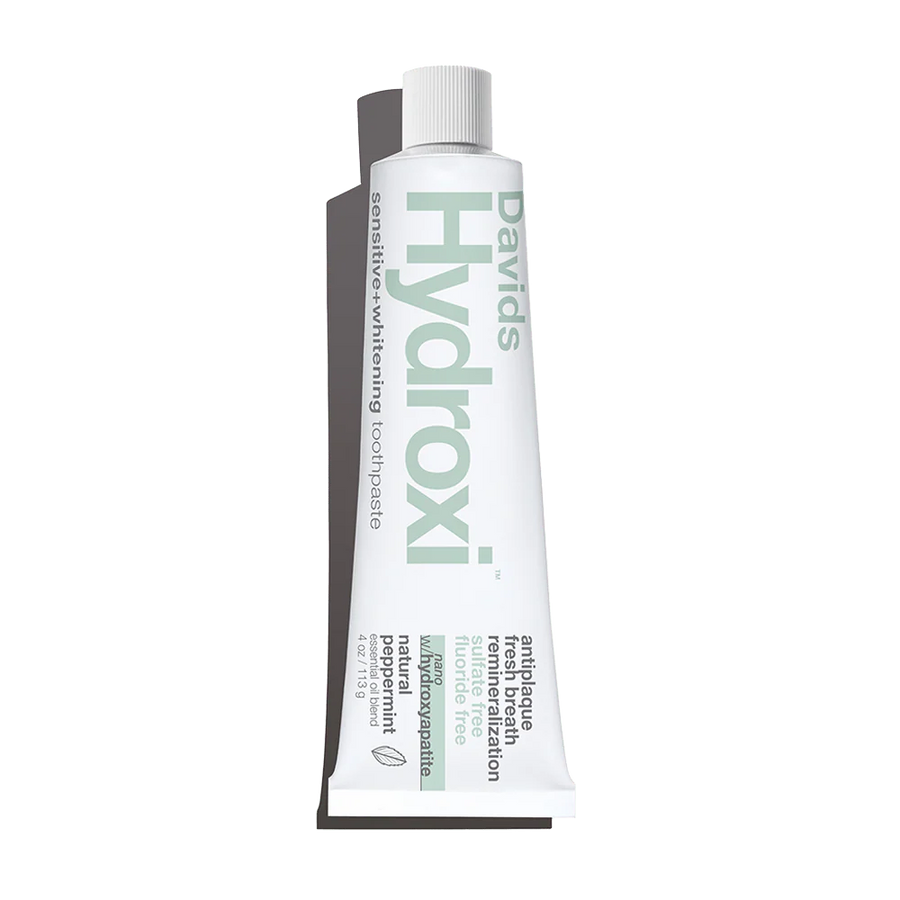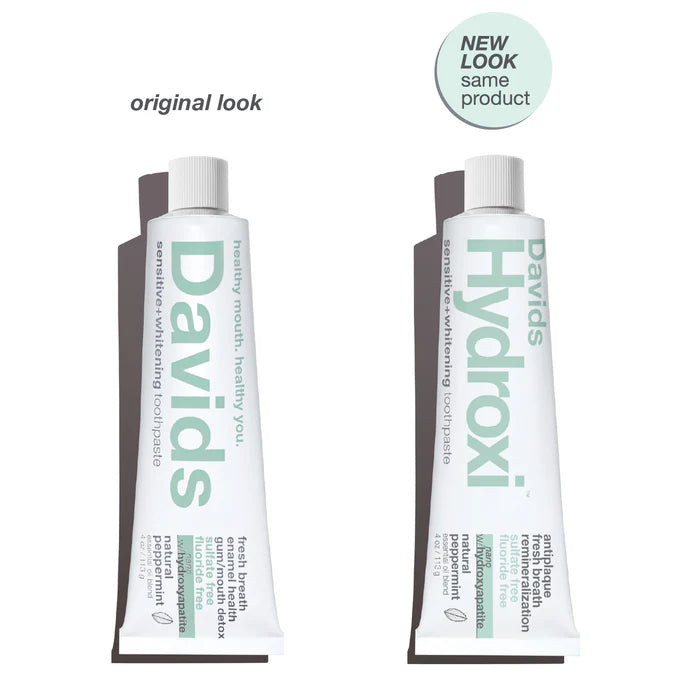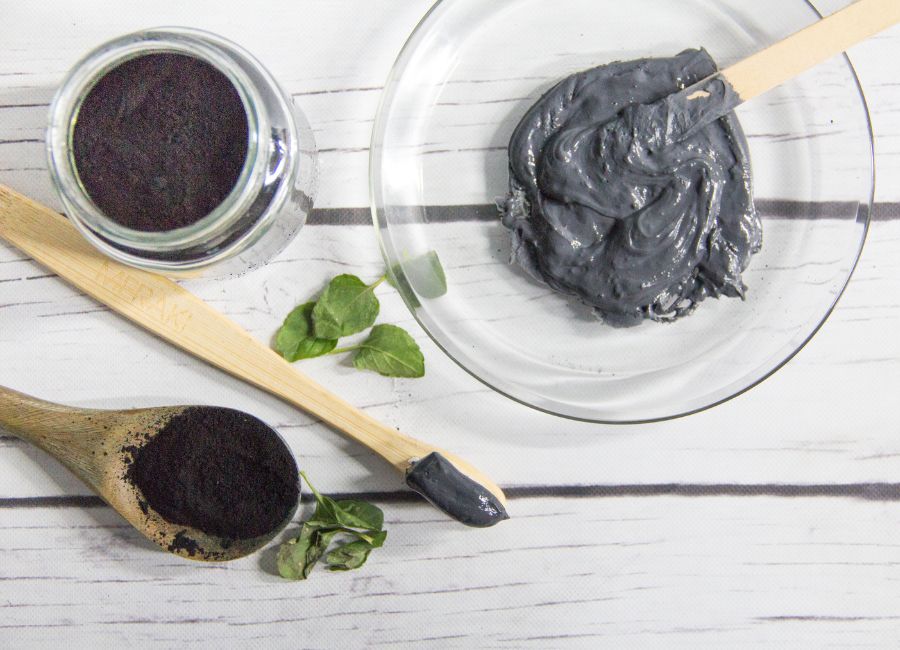Decoding the Ingredient List: What to Look for in Your Toothpaste

Toothpaste is something most of us use every day without giving much thought to what’s inside the tube. But those ingredients do a lot more than just freshen breath - they play a major role in protecting your teeth, gums, and overall oral health. From minerals that rebuild enamel to botanicals with antimicrobial power, understanding what to look for can help you choose the right formula for your needs. Let’s break down the most common and effective ingredients found in today’s toothpastes - both traditional and natural.
1. Fluoride
Fluoride is the most widely recommended toothpaste ingredient for a reason. This naturally occurring mineral strengthens tooth enamel and helps reverse early signs of decay by remineralising weak spots. If you’re not avoiding fluoride for personal or medical reasons, most dental professionals still advise using a fluoride toothpaste daily to prevent cavities.
2. Hydroxyapatite (n-HA)
Hydroxyapatite is an increasingly popular alternative to fluoride, especially in natural and fluoride-free toothpastes. It’s a biocompatible mineral that makes up 97% of your tooth enamel and 70% of dentin. Synthetic nano-hydroxyapatite (n-HA) mimics the natural structure of your teeth, helping to rebuild enamel, reduce sensitivity, fight cavities, and brighten teeth - without the need for fluoride. It’s especially well-suited for those with sensitive mouths or concerns about fluoride use.
3. Abrasives
Abrasives are responsible for the scrubbing action of toothpaste. They help remove surface stains and debris. Common examples include:
- Silica
- Calcium carbonate
- Baking soda (sodium bicarbonate)
The key is choosing a formula with safe, low-abrasion levels that clean without wearing down enamel. Many natural toothpastes use baking soda for a gentler polish and added alkalising benefit.
4. Humectants
Humectants like glycerin and sorbitol keep your toothpaste from drying out. They also give the paste a smooth, spreadable texture. While they don't offer direct oral health benefits, they make your brushing experience more pleasant and help extend shelf life.
5. Flavouring and Sweetening Agents
Toothpaste doesn’t need to taste like medicine to work. Sugar-free flavouring agents - such as xylitol, stevia, or sorbitol - add a pleasant taste without feeding cavity-causing bacteria. Xylitol in particular has antibacterial properties that reduce plaque and promote oral pH balance. Natural flavours like peppermint, spearmint, or cinnamon oil are common for a fresh mouthfeel.
6. Antimicrobial Agents
Some toothpastes are designed to target bacteria linked to plaque and gum disease. Ingredients to look for include:
- Zinc citrate (reduces plaque and gingivitis)
- Tea tree oil (natural antibacterial)
- Coconut oil (known for its antimicrobial and anti-inflammatory effects)
- Charcoal (used in moderation, it may absorb bacteria and toxins)
Avoid outdated antimicrobials like triclosan, which has been phased out in many regions due to safety concerns.
7. Desensitisers
If brushing sometimes triggers sharp pain, you may benefit from ingredients that calm sensitive nerves. These include:
- Potassium nitrate
- Strontium chloride
- Nano-hydroxyapatite (again, a standout for rebuilding enamel and reducing sensitivity naturally)
8. Binding & Thickening Agents
To give toothpaste its consistency and keep the ingredients evenly distributed, manufacturers use binders like:
- Xanthan gum
- Cellulose gum
- Carrageenan
These are generally safe, plant-derived additives that ensure smooth application without separating.
9. Natural Botanicals & Extracts
Plant-based ingredients can offer additional oral health benefits:
- Aloe vera (soothes irritated gums)
- Green tea extract (rich in antioxidants)
- Clove oil (known for its natural pain-relieving properties)
- Myrrh (a traditional antimicrobial resin)
If you prefer a more holistic approach to oral care, these ingredients are worth looking out for - provided the toothpaste still meets your functional needs.
10. Preservatives
To maintain freshness and prevent microbial contamination, some toothpastes use mild preservatives such as:
- Sodium benzoate
- Potassium sorbate
They’re used in small, regulated amounts and generally considered safe, though some natural formulas avoid them entirely.
11. Specialty Additives
Depending on your needs, you may also see targeted ingredients like:
- Hydrogen peroxide (in whitening formulas)
- Arginine (to block pain signals in sensitive teeth)
- Enzymes (like papain or bromelain, to break down plaque and biofilm naturally)
- Probiotics (to support a healthy oral microbiome)
12. Ingredients You Might Want to Avoid
Some additives can be irritating or unnecessary depending on your preferences. These include:
- Sodium lauryl sulfate (SLS) – A foaming agent that may cause mouth irritation or ulcers in sensitive individuals.
- Parabens – Synthetic preservatives that some choose to avoid due to health concerns.
- Artificial colours or flavours – These don’t serve any functional purpose and are commonly avoided in clean formulas.
Your toothpaste should do more than just clean your teeth - it should support your overall oral wellness. Whether you opt for a fluoride-based formula or a natural toothpaste enriched with hydroxyapatite and botanical extracts, understanding the ingredient list is key to making the right choice.
Look for a toothpaste that aligns with your dental concerns (like sensitivity, whitening, or enamel repair), lifestyle values (such as vegan or cruelty-free), and any ingredient sensitivities you may have. And of course, if you’re ever unsure, your dentist is your best resource for personalised advice.
Because brushing isn’t just a routine - it’s a twice-daily ritual that helps build the foundation of a healthy, confident smile.









